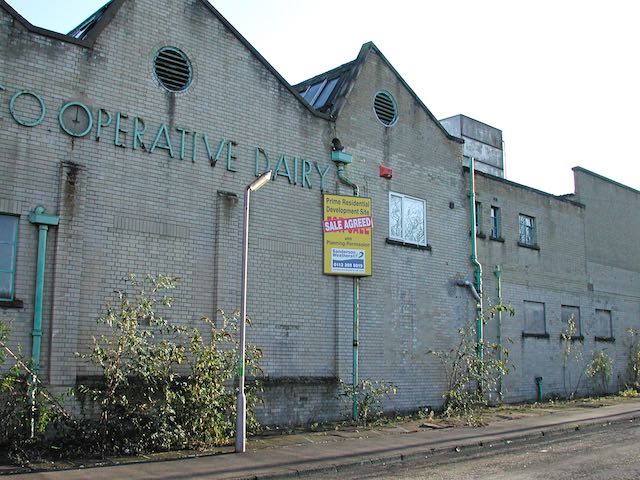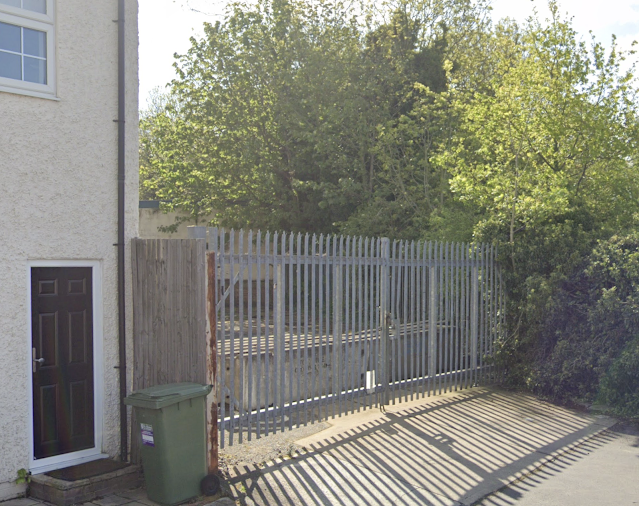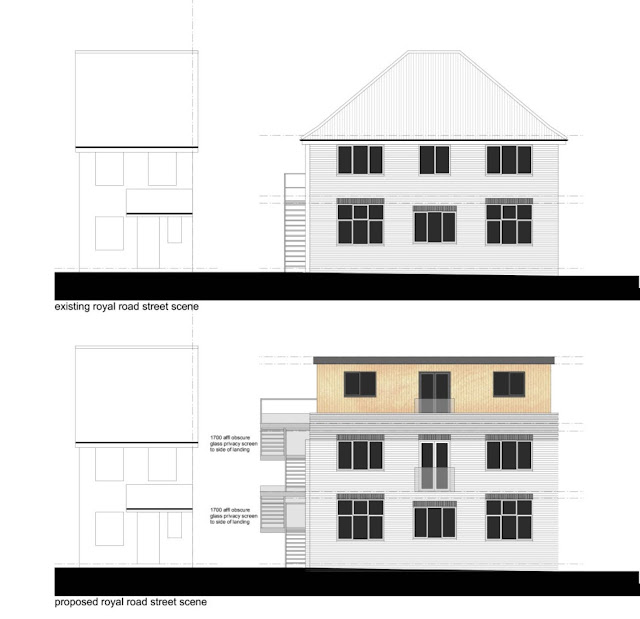This is one of those posts which points out back of beyond streets which most of us have not explored, let alone heard of. Between Sutton Road and Ashley Road is Castle Road, named after the field of the same name, which itself was named after the informal title of a turnpike toll house in the 1880s, the Rats' Castle. Castle Road became a diversionary route when parallel Hatfield Road occasionally flooded near to Sutton Road.
Manufacturer Horace Slade was also a building developer who at the turn of the century acquired a nominal amount of back land between Castle Road and the former branch railway, now part of Alban Way. Two cul-de-sac roads were laid out c1900 and given the names Cape and Kimberley following British success in the second Boar War. Kimberley was renamed Kimberley East in 1926 and renamed again to Burleigh in 1928. |
| Above name plate identified the former name of the road before 1926. Below is the name plate for the first two homes complete in Cape Road. |
Over in Kimberley Road (now Burleigh Road) a small nursery holding existed until c1930, although it was probably out of use before then. The St Albans Cooperative Society, searching for a bottling plant for its milk department, purchased the former nursery for its own building, with an entry onto Burleigh Road. Although a driveway might have been possible onto Ashley Road that road was not surfaced and developed until a short time later. After closure of the Dairy its buildings remained empty for many years until the modern homes replaced them.
 |
| Above: on the site of the original nursery arrived the dairy owned by St Albans Co-operative. Below: an array of modern home which replace the Burleigh Road dairy. |
Bennett's site, and that of Halsey's, became a growing and successful site for supplying building materials for the trade and retail, their owners, including Pratt's changing hands over time; even employing staff from the Hatfield Road company of Lavers when that timber yard closed.
 |
| The old entrance gate at the lower end of Cape Road. Through here trundled in and out the trucks loaded with building materials. |
This unfortunate process is not without its problems: continuity is important and when there is a break followed by a different team moving onto site issues can arise, although not inevitably so. New costs are also introduced which would need to be absorbed.
 |
| Above: plan of the proposed new housing development at the lower end of Burleigh Road. Below: a partly finished building within the dormant development. |
 |
 |
| Developer's image of how the earlier unfinished block is intended to look when complete. COURTESY VICINITI |
Nevertheless, according to recent advertising the part-complete development has been offered to the market, so perhaps it will not be too long before work resumes. One fact we are informed about, as long as the new developer does not alter its arrangements, the names of two new roads between Cape and Burleigh roads will be known as Iceni Close and Viciniti Court.















.jpeg)